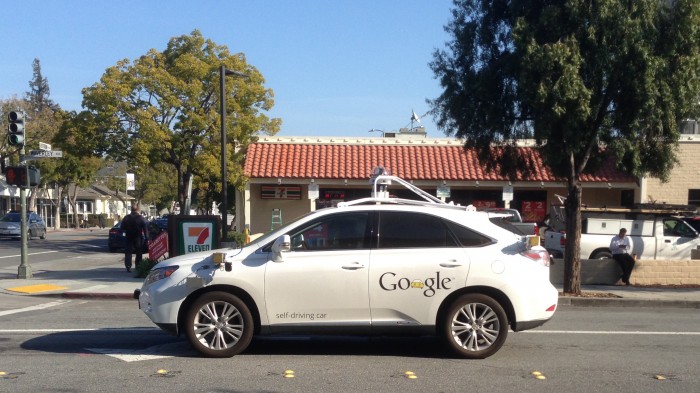Google’s Self-Driving Car Probably Caused Its First Accident
One of Google’s self-driving cars hit a bus, and if it is found to be at fault—which is looking probable—it will be the first time one of the company’s autonomous vehicles has been responsible for an accident on the road.
According to this story from the Associated Press, which relies on an accident report that California’s Department of Motor Vehicles posted Monday, one of Google’s autonomous Lexus SUVs hit a public bus on Valentine’s Day while trying to avoid sandbags on the road. While testing out its self-driving cars, Google has to have a human inside who can take the wheel if necessary, but apparently in this case that person thought the bus would yield.
Google said in a statement that it shoulders “some responsibility” for the accident.
Both the car and bus were traveling at slow speeds—Google’s car moving at two miles per hour and the bus at 15 miles per hour—and no one was injured. The Associated Press reports that the DMV wants to speak with Google about the incident.

The DMV report notes that the collision took place at a busy intersection in Mountain View—the corner of El Camino Real and Castro Street—in the afternoon on February 14.
Google has been testing its self-driving cars since 2009, currently using both Lexus SUVs and some smaller prototype cars (as of January, it had 22 Lexus vehicles and 33 prototypes out there, most in Mountain View and a handful in Austin, Texas). The cars have been in about a dozen accidents overall, though they haven’t been at fault in those.
While they all still drive with a human inside who can take over if need be, the National Highway Traffic Safety Administration—which regulates U.S. vehicle-safety standards—said earlier this month that it counts the artificial intelligence controlling Google’s cars as a “driver.” That move makes it more likely that completely autonomous cars will eventually be able to be sold and driven in the United States.
(Read more: The Associated Press, “Google’s Self-Driving AI Counts as a ‘Driver,’ According to the Feds”)
Keep Reading
Most Popular
Large language models can do jaw-dropping things. But nobody knows exactly why.
And that's a problem. Figuring it out is one of the biggest scientific puzzles of our time and a crucial step towards controlling more powerful future models.
The problem with plug-in hybrids? Their drivers.
Plug-in hybrids are often sold as a transition to EVs, but new data from Europe shows we’re still underestimating the emissions they produce.
How scientists traced a mysterious covid case back to six toilets
When wastewater surveillance turns into a hunt for a single infected individual, the ethics get tricky.
Google DeepMind’s new generative model makes Super Mario–like games from scratch
Genie learns how to control games by watching hours and hours of video. It could help train next-gen robots too.
Stay connected
Get the latest updates from
MIT Technology Review
Discover special offers, top stories, upcoming events, and more.